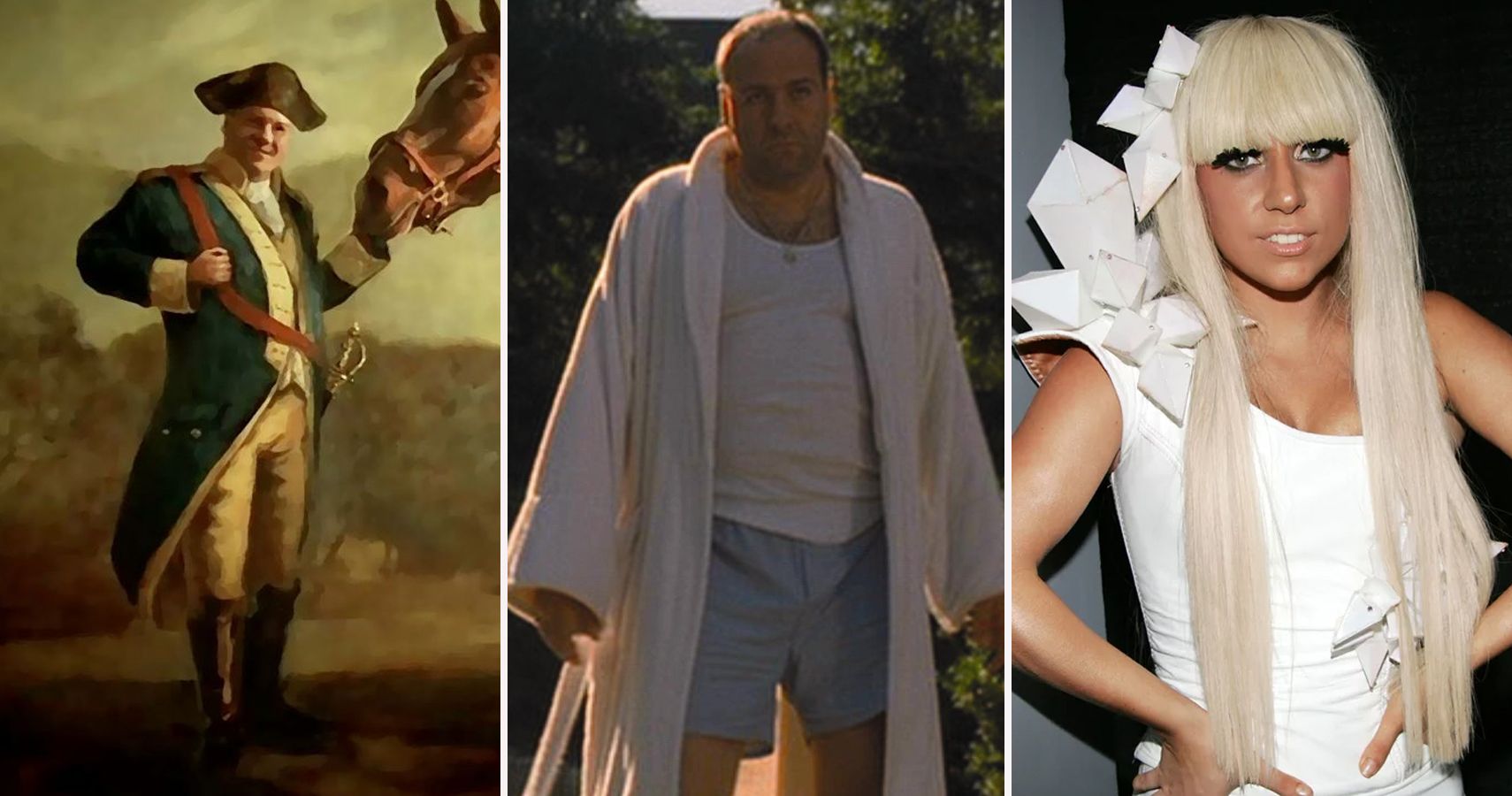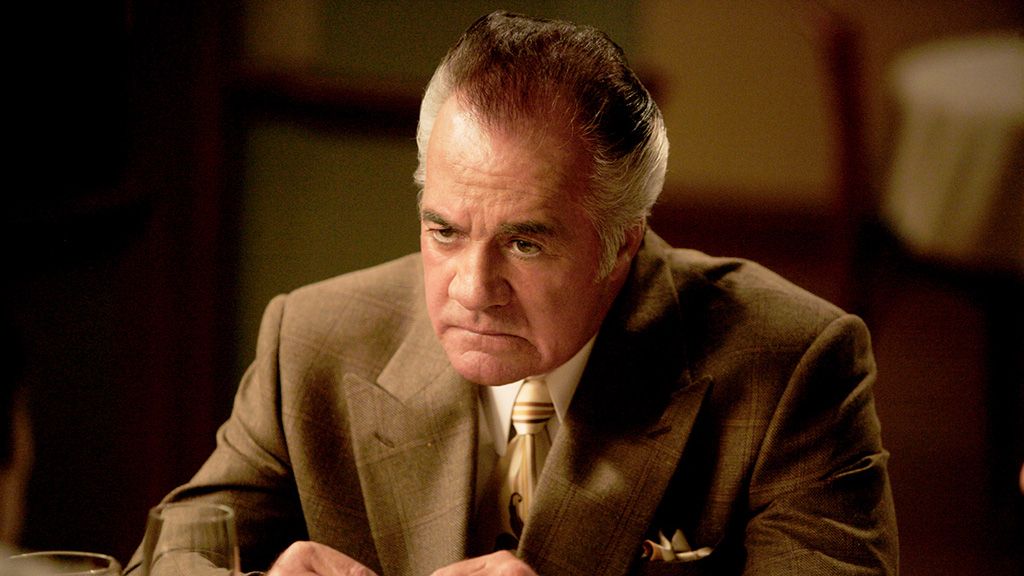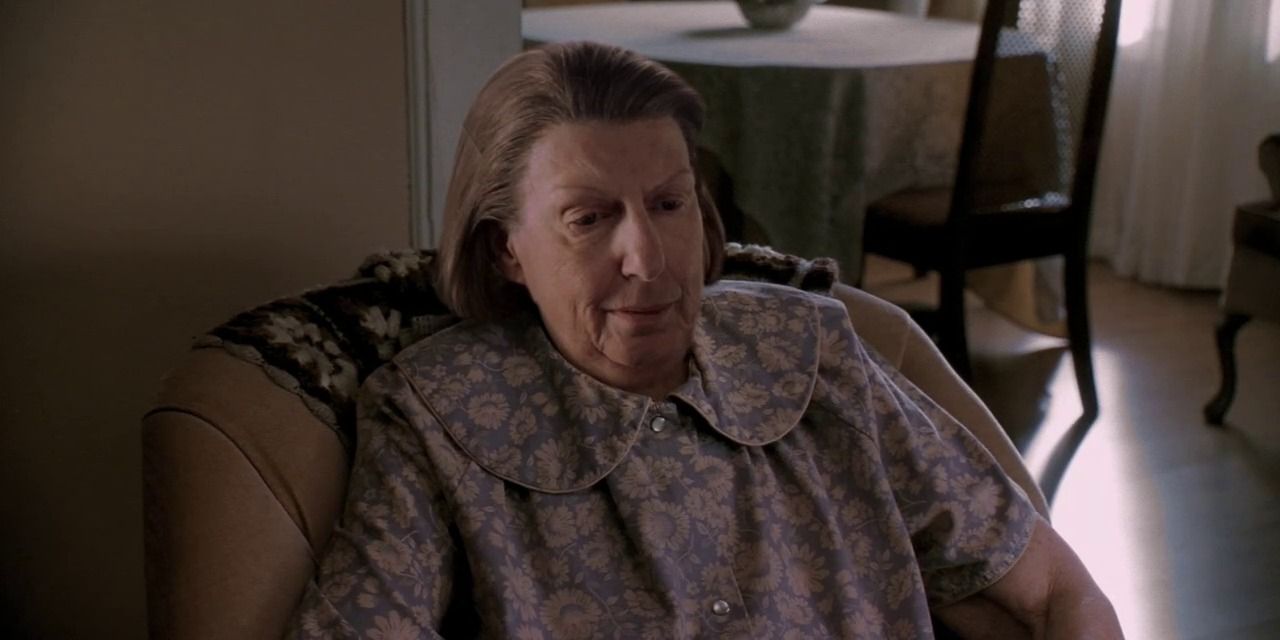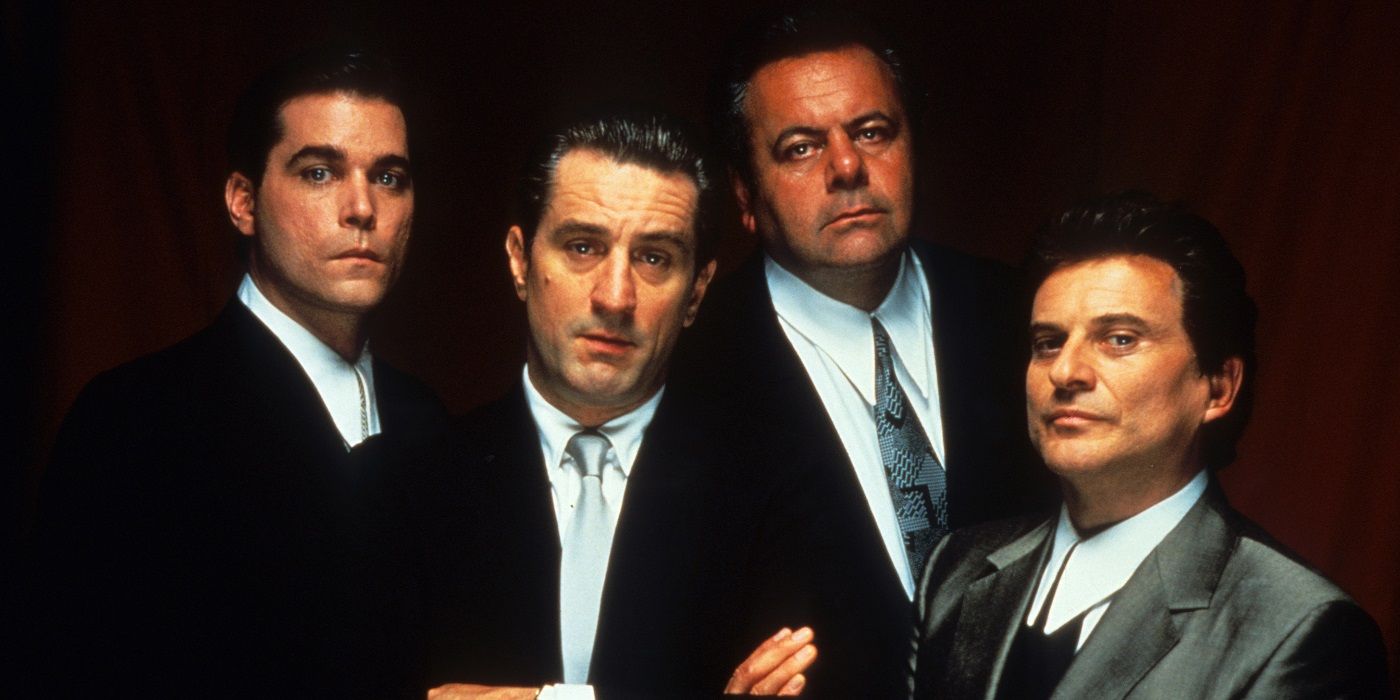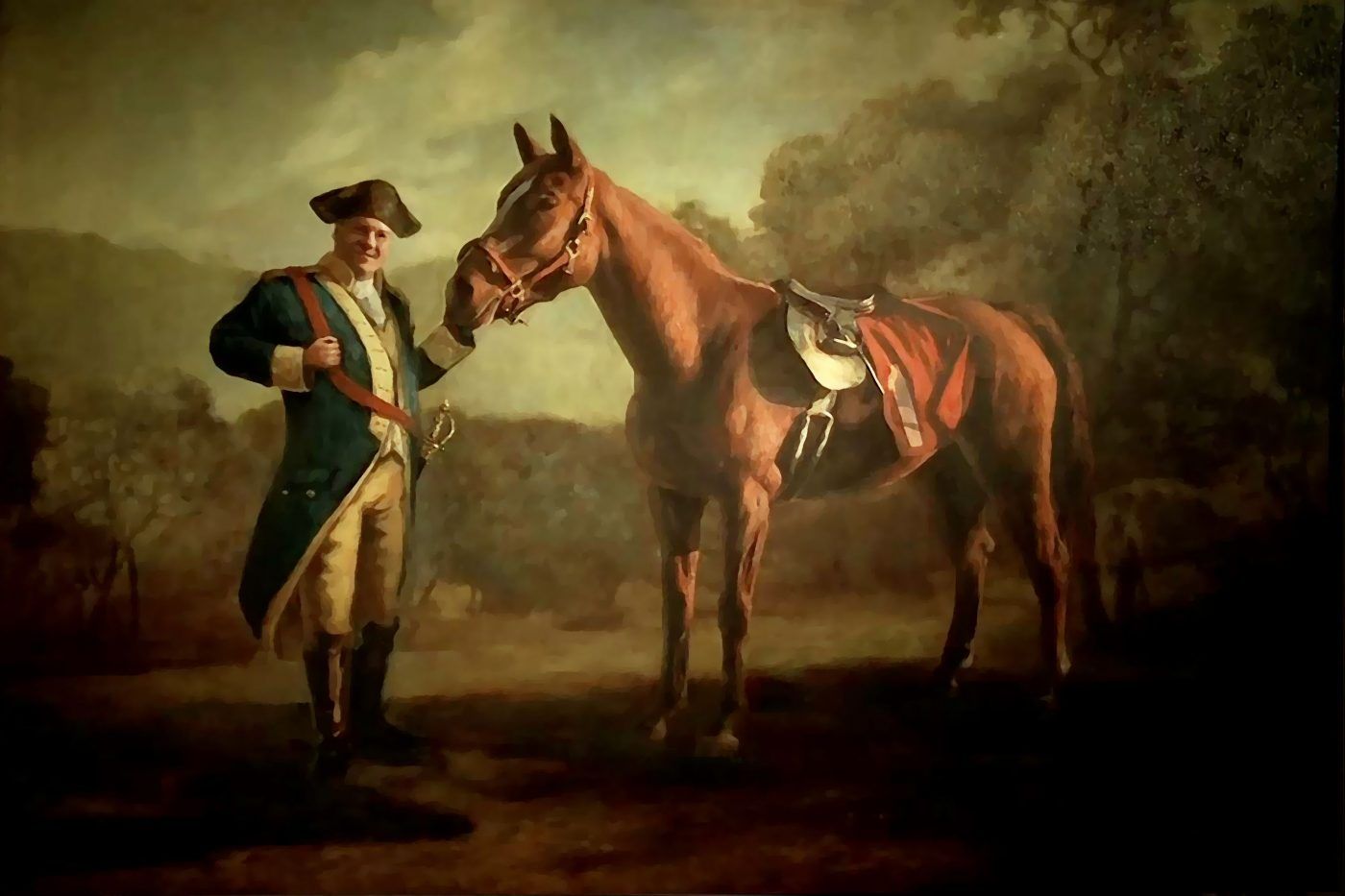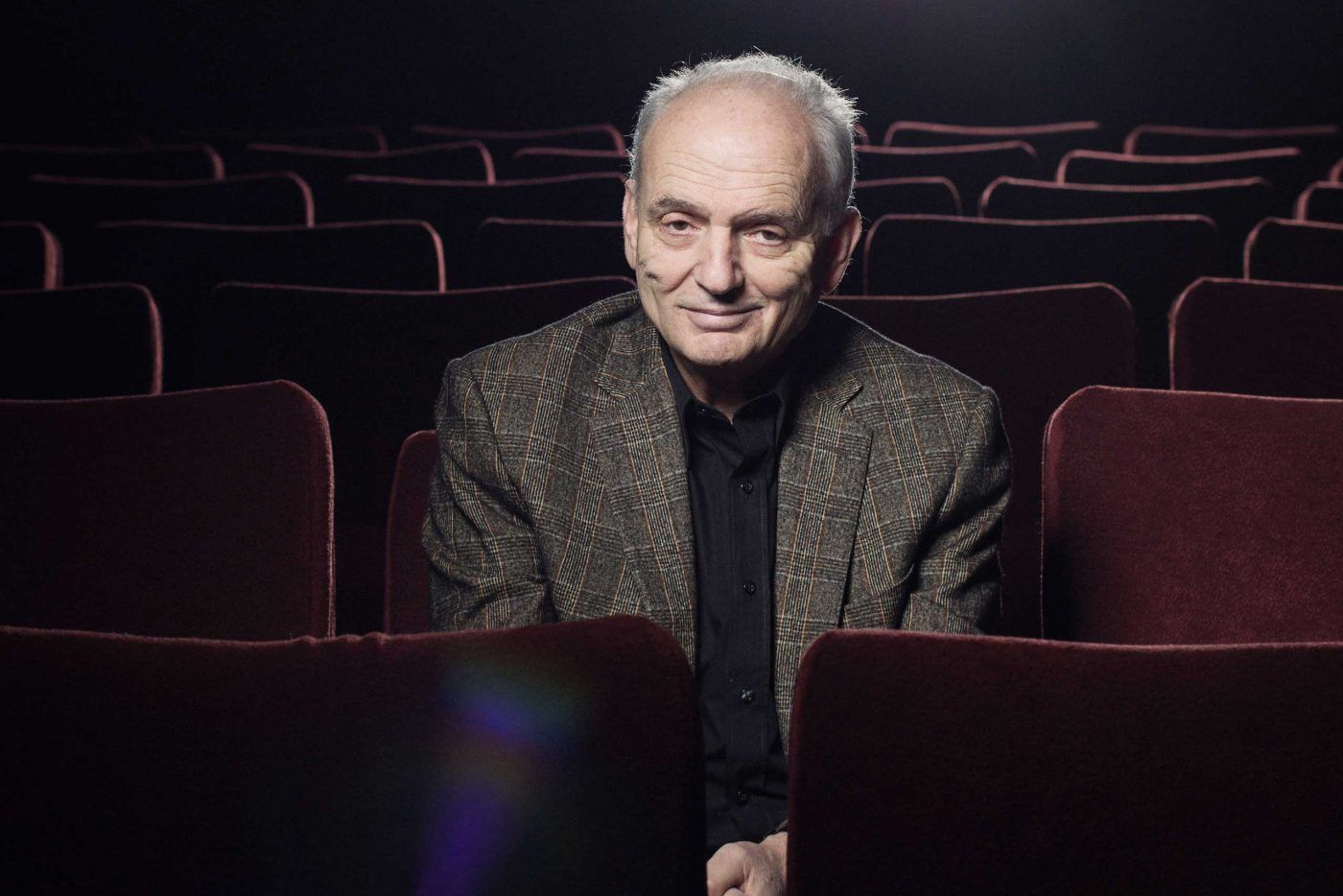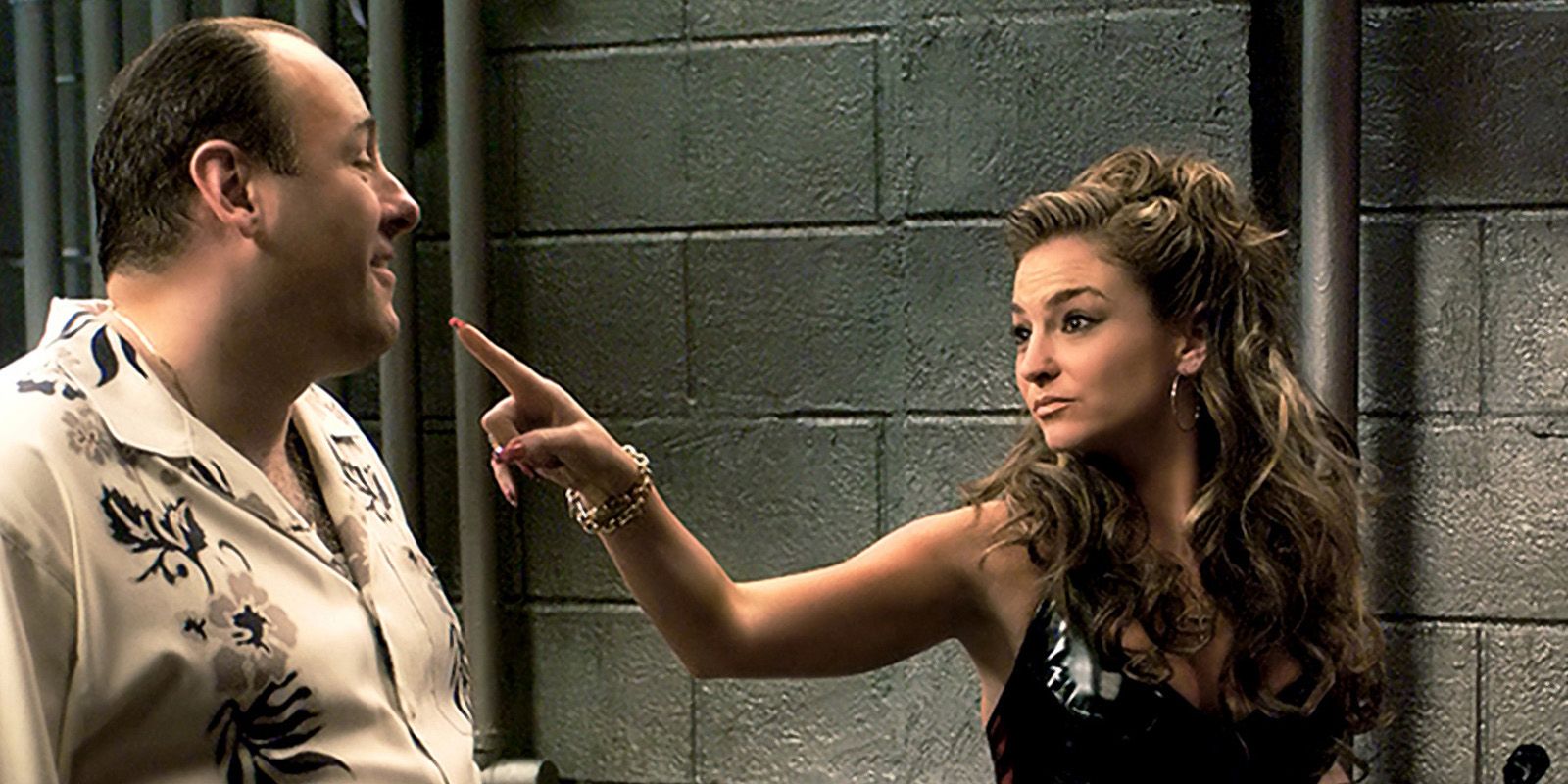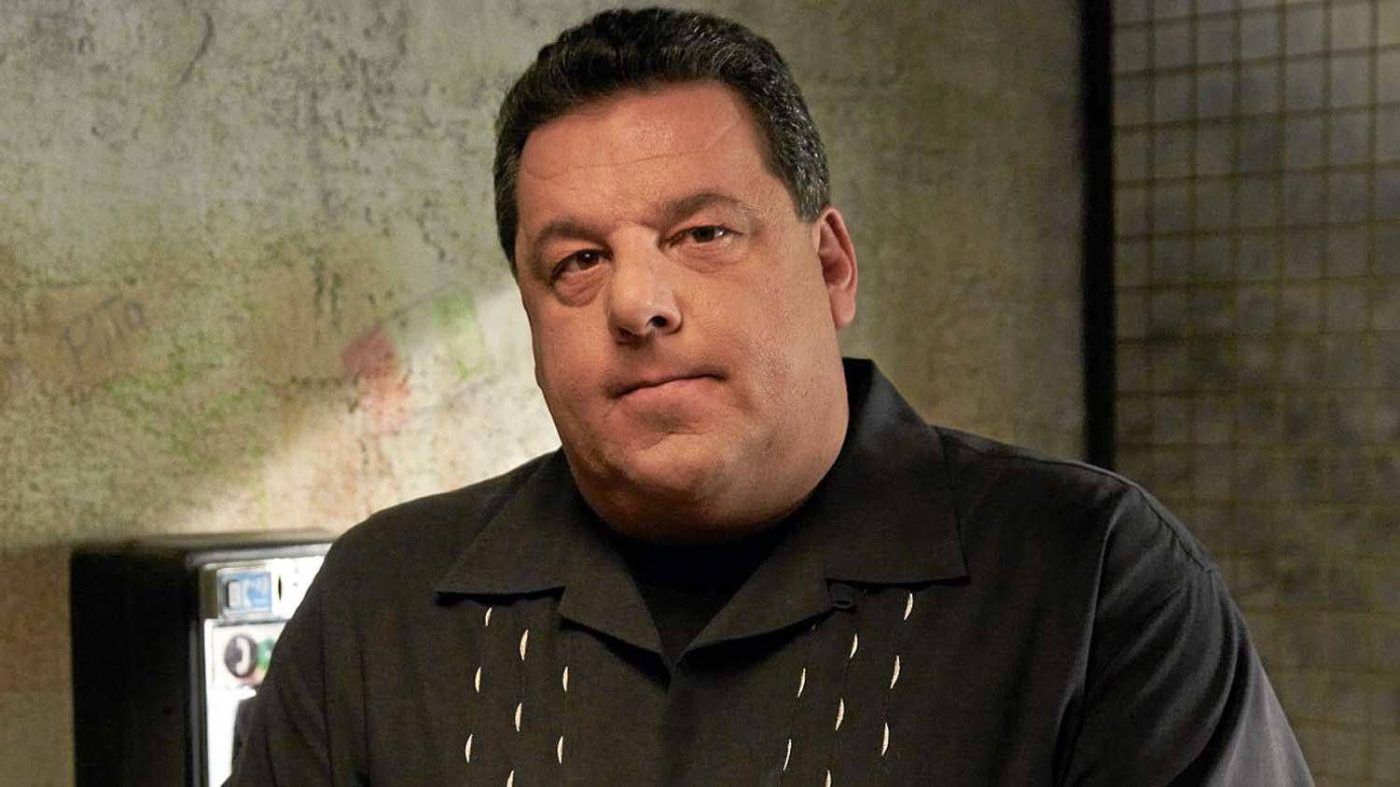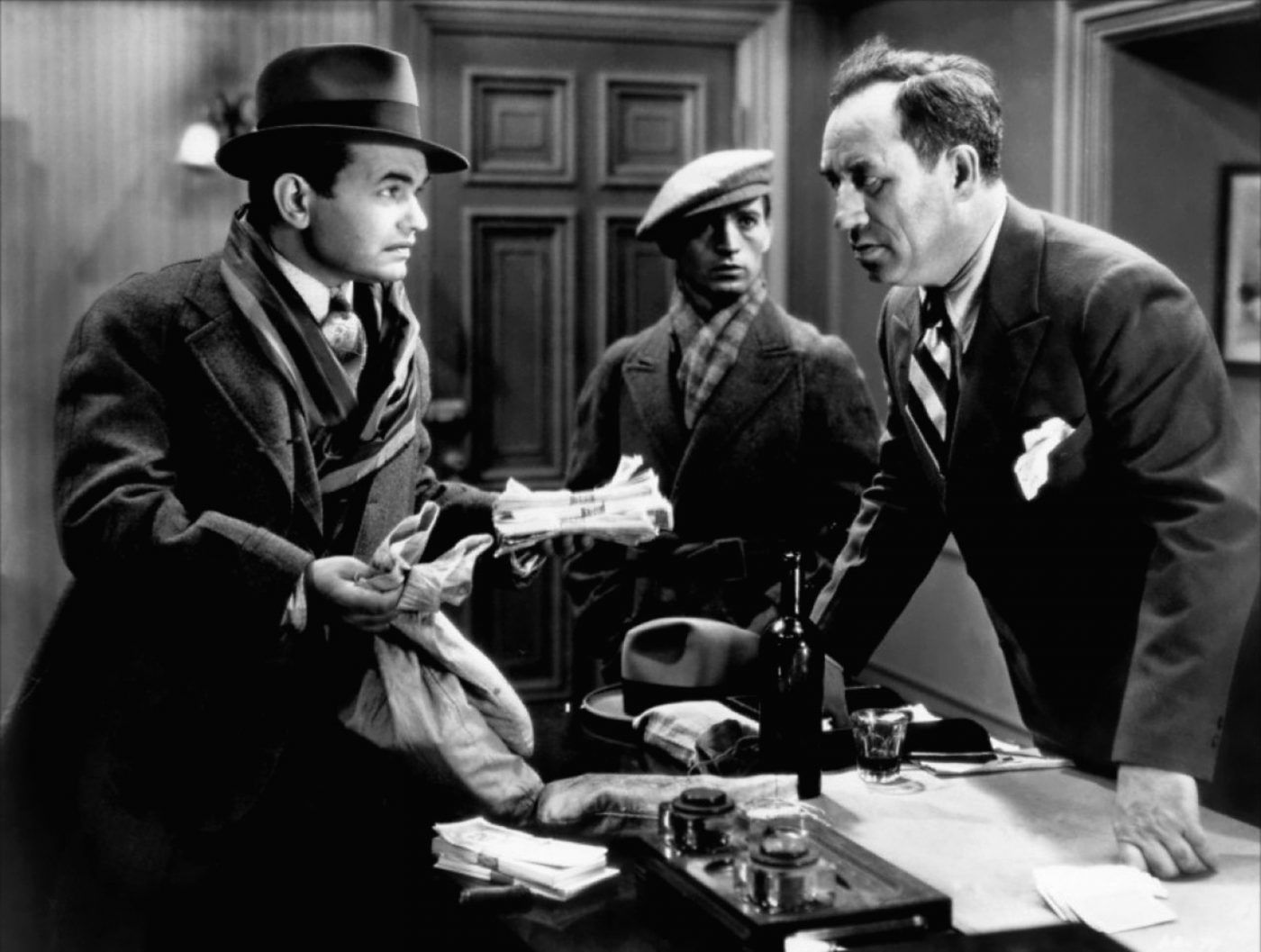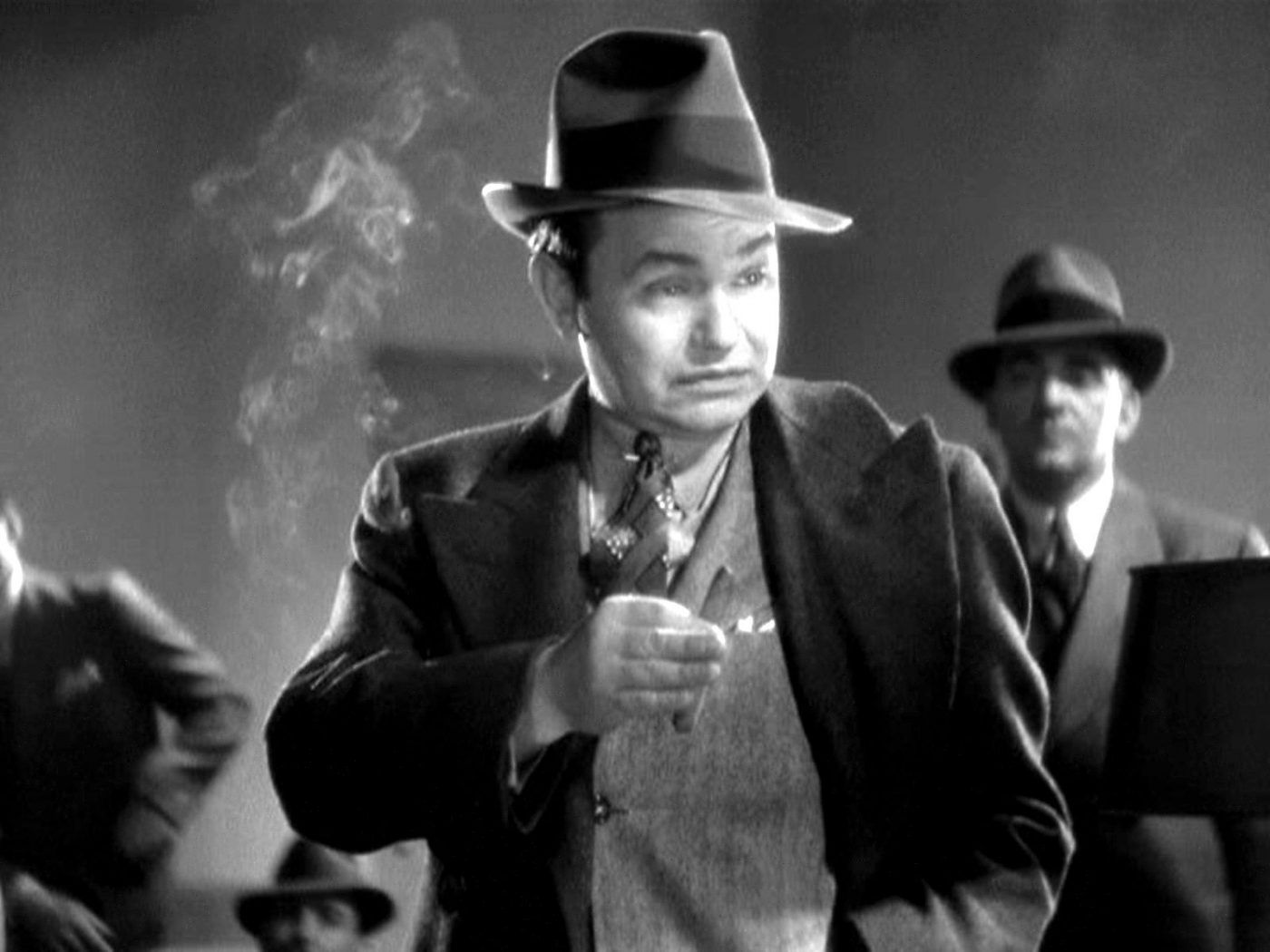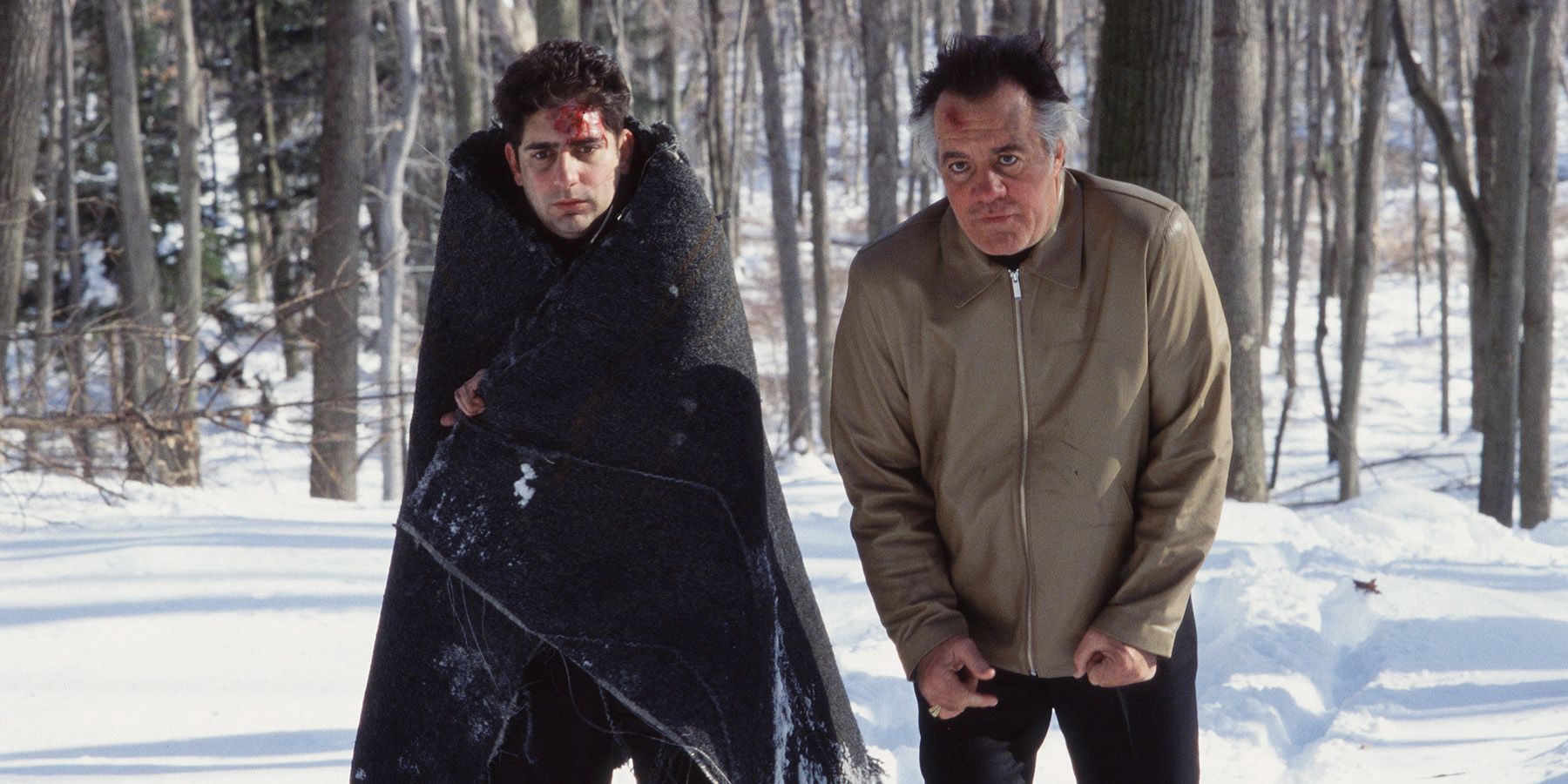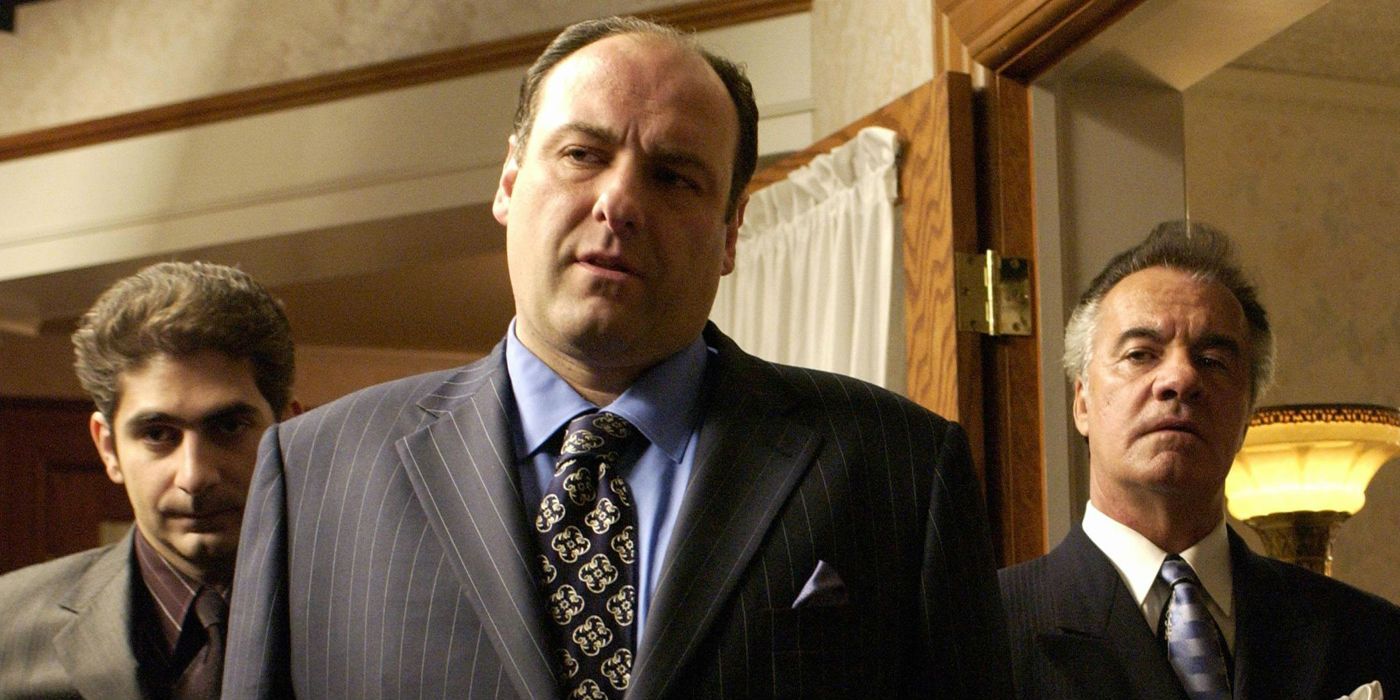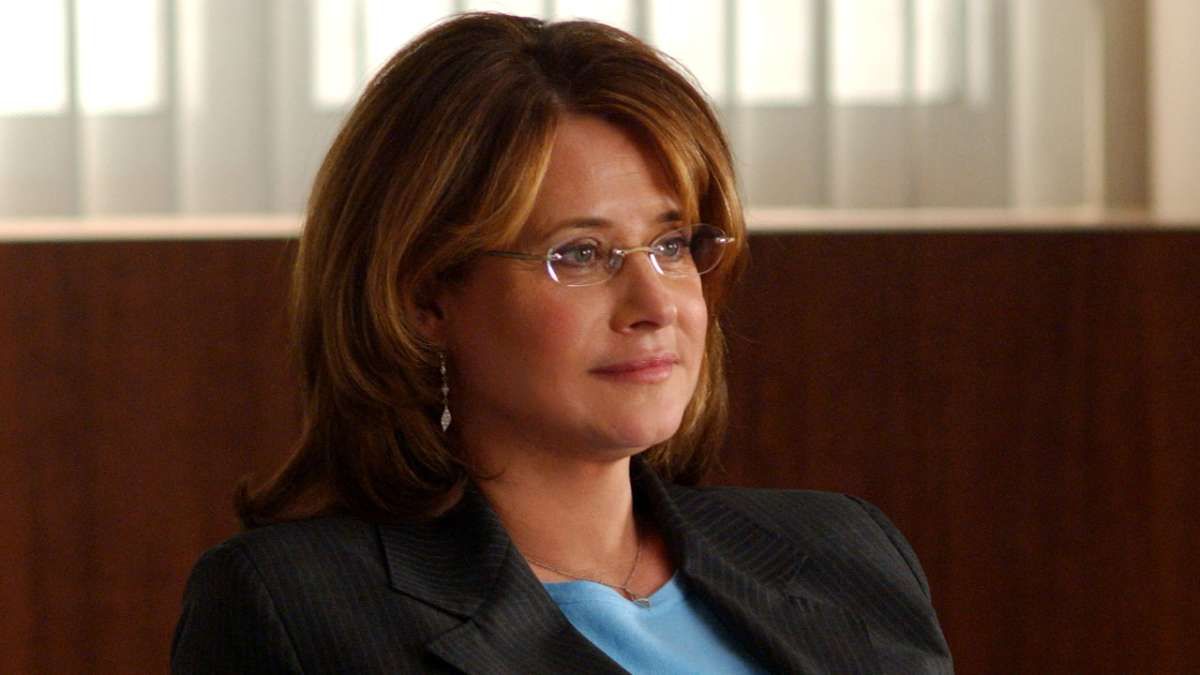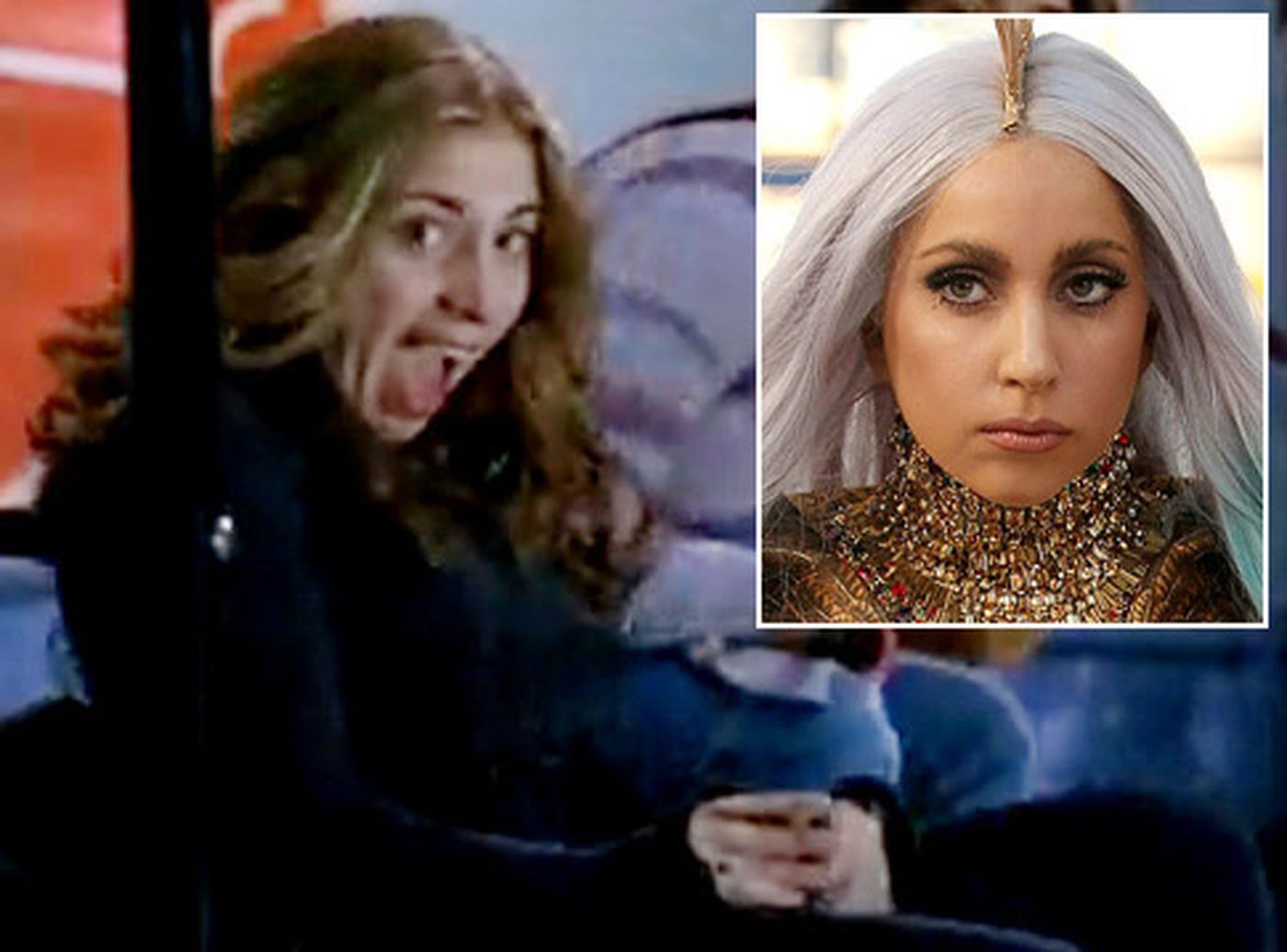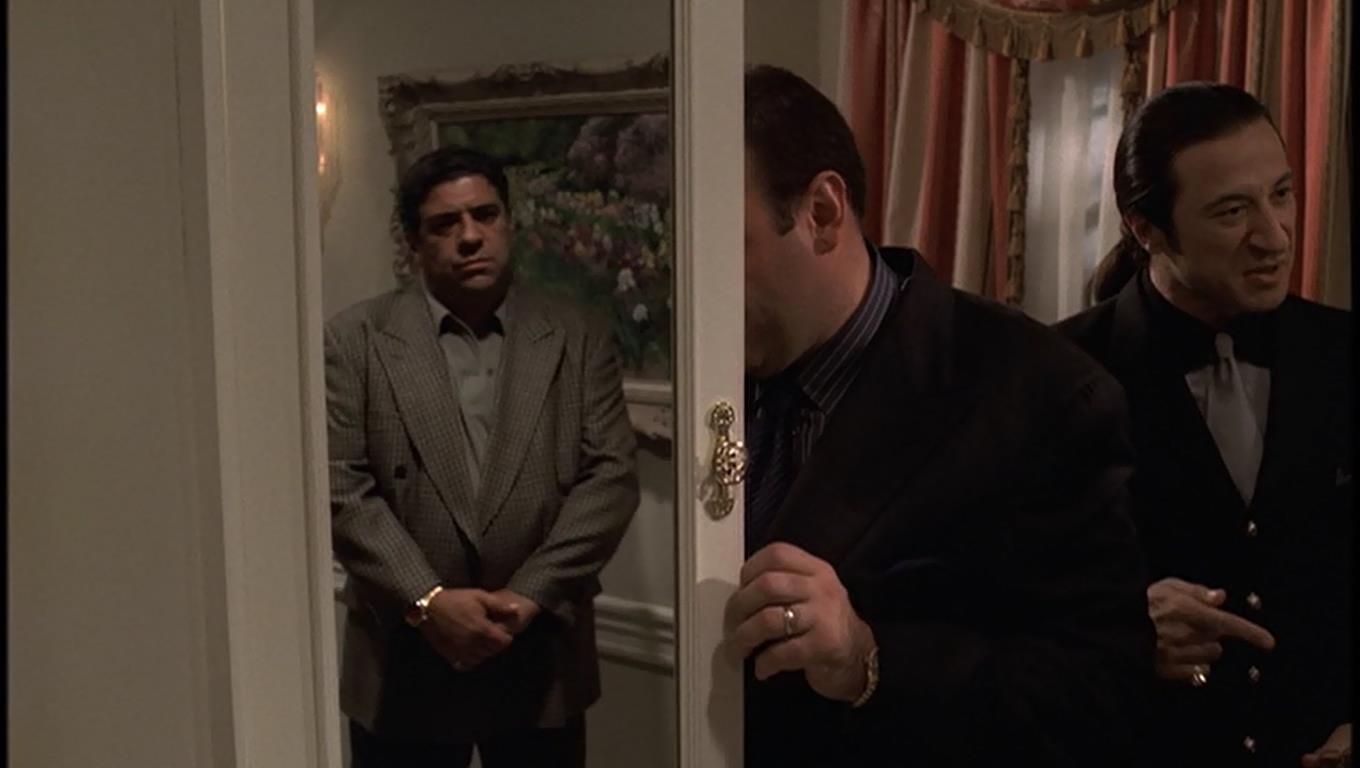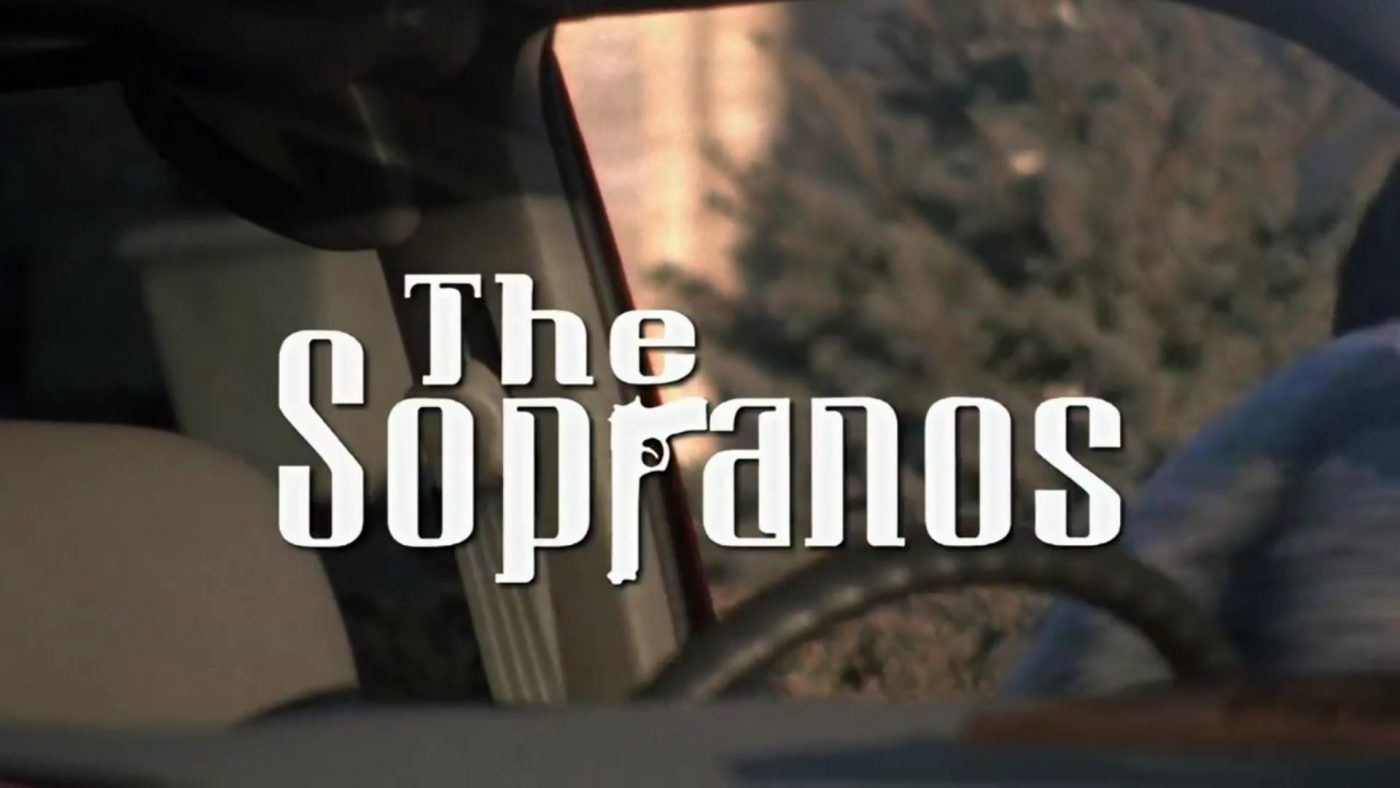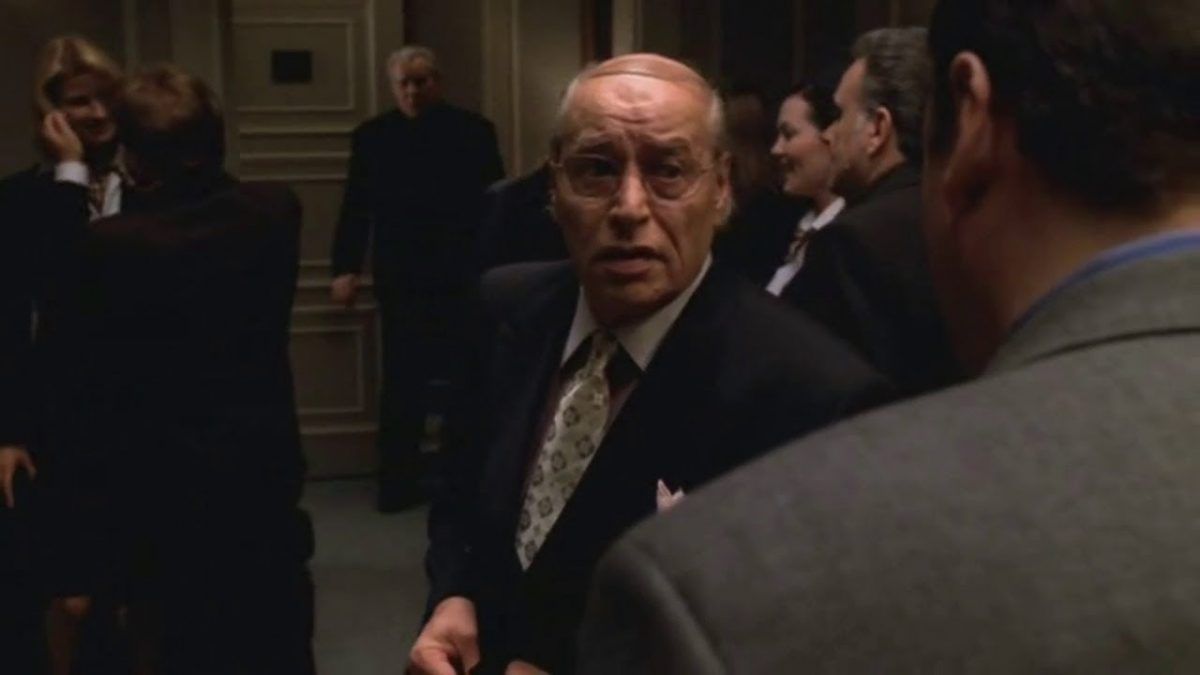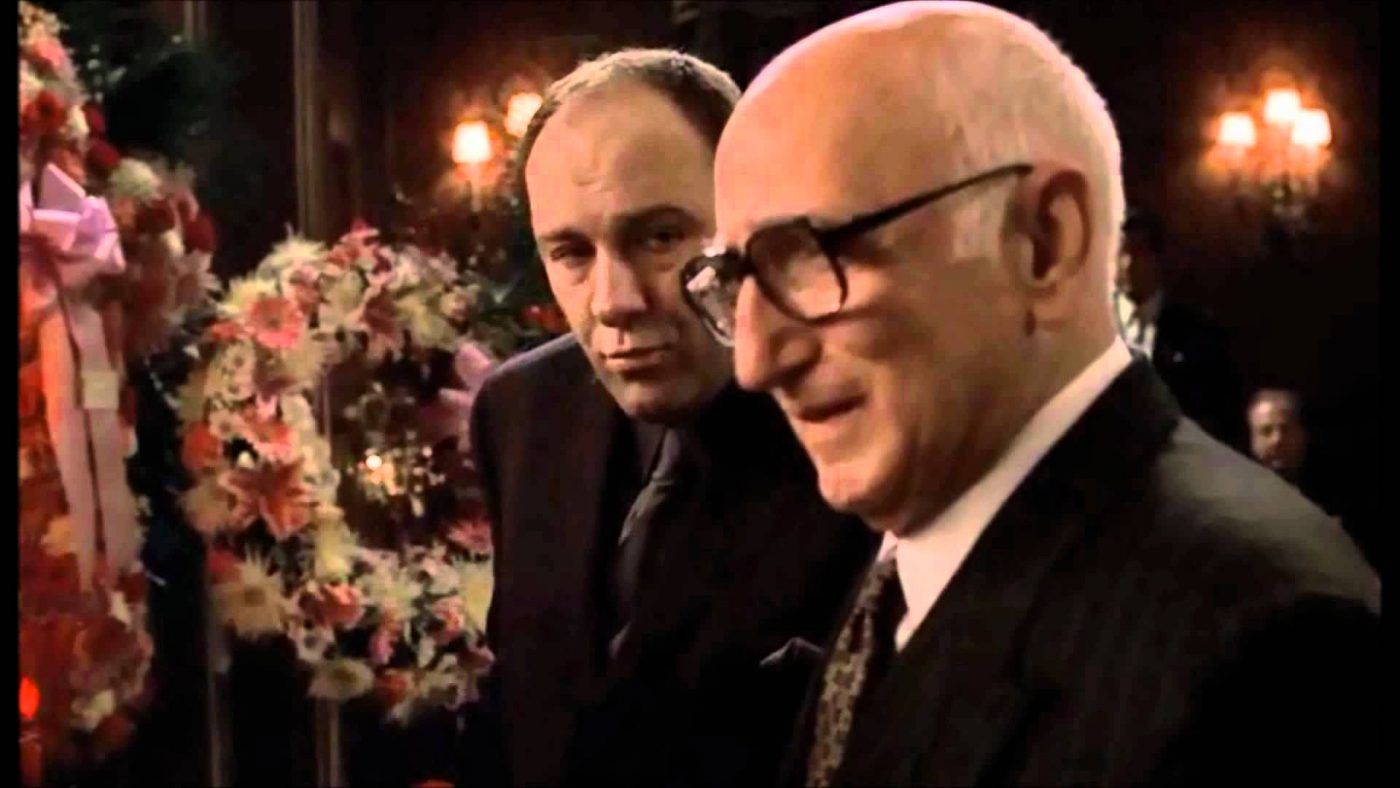According to a publicity piece for the film Blondie Johnson, "The value of gangster films now is entertainment. Their priceless ingredients for future historians is their truth". Over the years, the stories of fictional and real-life gangsters have greatly influenced society and culture.
The popularity of gangster films has led to some of the best cinematic masterpieces ever made. Most notable among them being the Godfather trilogy. Considering how popular the gangster genre has grown over the years, it was only a matter of time, before someone made a TV series based on it.
However, when it gets down to it only one series about gangsters really stands out, none of them have more impact than The Sopranos. Hailed as one of the best TV series ever made, The Sopranos has definitely made its mark in pop culture, even after it came to an end in 2007.
Though, originally intended to be written off as a film, the series creator, David Chase was led to an alternative option, which soon led to the development of this critically acclaimed series.
Focusing on the life of Tony Soprano as both a mob boss and family man, the show features plenty of references to past films and other works relating to the gangster genre. For most fans of the series, several of these references and secrets are not so easily found and requires time and effort to spot them.
Here is a list featuring some of the 19 Things You Missed In The Sopranos!
19. The Reason Why Sirico Refused To Become A Rat
When it comes to criminals in The Sopranos, there is no shortage of impressive characters. However, Paulie Walnuts is one of the very few that manages to stand out amongst them. Portrayed by Tony Sirico, his performance as Paulie is one of the most memorable, as well as the most dedicated in the series.
When a person is casted into The Sopranos, being able to understand and adopt the mindset, behavior, and even speech patterns of a gangster is crucial. In Sirico’s case, this comes as naturally as breathing. The main reason why Sirico is such a natural at portraying a criminal, is because he used to be one himself.
Before he got into acting, Sirico had an extensive rap sheet which involves an infamous record of 28 arrests. After turning over a new leaf, Sirico pursued an acting career, which soon led him to The Sopranos.
However, when Sirico was casted to play Paulie, he had one condition. He and Chase agreed that no matter what direction the series went, under no circumstances would Paulie ever become a rat. While this request may sound unusual to some people, it is a serious matter for Sirico. Due to his past, it makes complete sense that he would avoid playing the part of an informant. When it comes to embodying the spirit of a gangster, no one is more dedicated than Sirico.
18. Livia Soprano’s Final Moments Were CGI
When it comes to The Sopranos, there is no shortage of conflicts between Tony Soprano and his many enemies. However, on of his biggest conflicts happens to be between him and his mother Livia. As one of the shows biggest antagonists, Livia has more than once been the subject of frustration for Tony during his sessions with his psychologist, Dr. Mefli. Suffice to say, their relationship was quite dysfunctional and provided most of the conflict for the show’s first season.
However, as strict and demanding as she was, Livia contributed greatly to the show’s development. Originally, she was supposed to be taken out in the first season by Tony. However, real life complications granted her character a little more time on the show.
During this time, Livia’s actress, Nancy Marchand, was diagnosed with cancer. Despite her condition, she made a request to David Chase, asking him to let her continue working on the show until the very end. Chase happily obliged her request.
However, even after Marchand passed away, Livia still appears in the show until she dies during the third season. This was achieved through the application of CGI and putting together old shots of Livia along with old recordings of her.
In the end, the use of CGI to keep Livia alive was not one of the series best moments.
17. The Sopranos And Goodfellas Share A Similar Cast
When it comes to depicting the life of a mob boss and his organization, The Sopranos hits close to home. Not only is it a great show, it is also one of the best TV series that focuses on the life of gangster culture.
However, when the series creator, David Chase, went about creating this massive project, he made sure to gatherer a cast that possessed the necessary experience. As he gathered his cast, it ended up them several of them possessed, or ended up acquiring, a criminal history. Including the previously mentioned Tony Sirico, Tony Darrow is another example. Known for playing Larry Baresse, Darrow was also an active member of the Gambino crime family.
During the time he spent looking for appropriate actors, Chase’s search led him to the cast of the 1990 film, Goodfellas.
Several of the film’s cast were interested and auditioned to ear a part in The Sopranos. In total, The Sopranos share a total of 28 cast members with Goodfellas. Among this list are six of the show’s main cast: Lorraine Braco, Tony Sirico, Michael Imperioli, Vincent Pastore, Frank Vincent, and Josep R. Gannascoli. If that wasn’t enough, over 11 guest stars, and ten recurring characters also appeared in this famous gangster flick.
16. Paulie’s Taste In Art
As one of Tony’s most trusted lieutenants, Paulie is an irreplaceable cog that keeps his organization running. Though he is Tony’s subordinate, they love one another like brothers. As a result, it seems unlikely that anything could rattle their bond. However, there is one moment in the series that tests the limits of their friendship.
In “The Strong Silent Type”, Paulie prevents the destruction of a painting featuring Tony and his prized horse, Pie-o-My (which died in a previous episode). After taking it home, he paints over the image of Tony in a suit, replacing it with a uniform like that of Napoleon Bonaparte. While this appears to be just another of Paulie’s quirks, it’s possible that it carries a deeper underlying meaning. In this case, he views Tony as Napoleon, whose decision to invade Russia led to the downfall of his empire and his eventual exile. The war drums playing at the end of the episode further emphasizes the coming conflict within Tony’s crime family.
Eventually, Tony finds out about the painting and expresses his displeasure by removing it and throwing it away. After he throws it in a dumpster, the camera cuts to several areas of the picture featuring his uniform, allowing viewers to observe the painting from Tony’s perspective. Looking on his face as he does this, viewers can clearly tell that Tony his hurt by the symbolism behind Paulie’s depiction of him.
15. David Chase Was Not The Only Director
Creating a show as successful as The Sopranos would not be possible without the help of a talented director. However, sometimes, just one director may not be enough. Throughout the series run, the show has been supervised by quite a few directors.
Ironically, among the many directors that participated in the show’s production, David Chase only directed two. These include the pilot episode and the show’s final episode. Chase aside, other directors include the likes of Steve Buscemi, Allen Coulter, Lorraine Senna, and of course Tm Van Patten.
Buscemi was responsible for directing four episodes, among which includes the episode “Pine Barrens”. Coulter is responsible for directing twelve episodes which includes “College” and “The Test Dream”, which are considered two of the best episodes in the series.
Senna directed the least number of episodes with only the episode “Down Neck”. On the other hand, Tim Van Petten is most famous for directing the most episodes in the series. As a director for other HBO series such as Game of Thrones and Boardwalk Empire, Van Petten is responsible for producing twenty episodes for The Sopranos. With so much talent behind its production, it is no wonder that The Sopranos became one of the best shows of all time.
14. Andrea de Matteo’s Cameo
While Tony may be the star of The Sopranos, the series does not always revolve around him. Most of the time some of the other characters have their own moments to shine. One such example is Christopher Moltisanti and his other half, Adriana La Cerva.
Having been around for nearly five seasons, Adriana is one of the longest running characters in the series. She is mostly known for being Christopher’s former lover and later his fiancée. Unfortunately, though not seen, it is implied that she was “taken care of” in the episode “Long Term Parking”.
Although she was an important character, Andrea de Matteo was almost passed over for her role. According to Chase, he believed that she was not Italian enough for the role of Adriana. It was not until the series was officially picked up by HBO that Andrea finally got the part of Adriana.
Adriana was officially introduced in the second episode of the series, but Andrea appears in the show’s pilot episode.
However, at the time she was not recognized as Adriana. Rather, she makes a cameo appearance as an unnamed hostess. In the end, considering all that Adriana has done, it is hard to imagine she was originally meant to be a minor character.
13. Steve Schirripa's Suit
Among Tony’s loyal soldiers, its pretty hard to forget the big-hearted capo known as Bobby Baccalieri. Also known by his alias, “Bobby Baccalà”, he is played by Steve Schirripa.
Unlike most actors, Schirripa had to take some additional steps to prepare for his role as Bobby. During his audition, he was deemed the ideal choice to portray his character. However, there was problem that proved to be a minor inconvenience for Schirripa. When he auditioned for the role, although he was perfect in terms of character, he did not have the same body type as his character.
According to him, after he got the role and read the script, what stood out for him was the references that Tony Soprano made to his character. He knew right away that he could never pass as Bobby on screen with his current body type. A few days before shooting began, he received a call stating that he would be fitted for a fat suit. Thus, Schirripa was forced to wear a fat suit for the show’s first couple of seasons.
Sometime after the second season, Schirripa started to develop some eating habits, which led to him gaining weight. As a result, he soon gained a sufficient amount of weight, that he no longer required a fat suit to portray Bobby.
12. The Change In The Show's Opening
When it comes to The Sopranos, there are several elements that are responsible for capturing the audiences. One of the most vital elements that succeeds in catching the viewers attention is the show’s opening.
One part of the opening that grabs the viewers attention is the song “Woke Up This Morning” by Alabama 3, a British band known for fusing dance with gospel, blues, rock and country. There are plenty of people who agree that the show’s opening is one of the best highlights of the series. According to a Rolling Stones readers poll, The Sopranos opening is one of the best TV theme songs of all time.
However, the song is only as effective when coupled with the compilation footage of Tony driving his car through the Lincoln Tunnel, going from New York, to his home in New Jersey. While he is driving, the footage features several shots of unique landmarks native to the city of New York and New Jersey. In the early seasons of the show, one of the many sights shown in the opening was the Twin Towers, which can be seen through Tony’s rear view mirror.
This shot of the towers remained in the show’s opening until the events of September 11th, 2001. After this event, the shot of the towers was immediately removed from the opening sequence.
11. The Sopranos Frequently References The Godfather Films
As a show about gangsters, it is only natural that The Sopranos would make frequent references and homages to other works of the gangster genre. Of course, for one of the greatest shows of all time, it would not be complete without a reference to what many consider the greatest movie of all time.
That’s right, The Sopranos makes frequent references to the Godfather trilogy.
Some of these references can be quite noticeable, while others require a little bit of time and attention to pick up on.
One example was shown in the episode “Nobody Knows Anything” by Paulie. While trying to get Big Sal’s attention, he drives by honking his horn. Instead, of a generic car horn, Paulie’s horns plays the Godfather trilogies theme song, “Speak Softly, Love”.
This example is only one of many references alluding to elements inspired from the Godfather films. Other notable example includes the orange juice Tony buys moments before an attempted hit on his life. As fans of the films know, oranges are a symbolic item that foreshadows moments of violenc.
Interestingly, Dominic Chianese, who plays Johnny Ola in Godfather: Part 2, is the only one of the show’s major cast, to have stared in a Godfather.
10. Referencing Little Caesar
As important as the Godfather trilogy is to a show like The Sopranos, it is not the only film it pays homage to. Indeed, The Sopranos references several important movies from the gangster genre. Many of these references are responsible for creating some of the best moments in the series.
It just so happens that Junior Soprano, played by Dominic Chianese, makes a reference to one of the more classic films in the gangster genre. In the episode “House Arrest”, Junior makes use of one of the oldest lines in the history of gangster films: “Mother of Mercy, could this be the end of Rico?”
For those of whom are deeply connected with the gangster genre, this line no doubt sounds familiar. In fact, it is taken from one of the first gangster films ever made, Little Caesar. Released in 1935, Little Caesar tells the story of a small-time hood who makes his way to the top and becomes a big-time gangster, only to later lose everything.
The fact that The Sopranos manages to make use of a quote from a film featuring a character, which Empire describes as the “first great film gangster”, shows how the series pays its respects to their predecessors responsible for making the gangster genre what it is today.
9. The Cameos Of Gangster Cinema Legends
When you consider how much The Sopranos pays homage to some of the greatest works in gangster culture, it only makes sense that the show’s creators would come up with creative way to include them in the series. It just so happens that a few legendary alumni of gangster cinema make cameo appearances in the show’s pilot episode.
After being tasked with eliminating a rival gangster, Emil Kolar, Christopher lures him in the back room of a butcher shop. While there, he catches him by surprise and proceeds to take him out in a very brutal manner. With every blow Christopher lands on Kolar, the camera cuts away and performs close ups of several images from a collage of legendary figures within the same room.
Among these movie legends are Humphrey Bogart, Dean Martin, and Edward G. Robinson, each of whom made significant contributions to the gangster genre. Edward G. Robinson is famous for his roles in gangster films such as Little Caesar. Dean Martin was famous for appearing on the Goodfellas soundtrack. Finally, Humphrey Bogart is recognized as a symbol of masculine strength, and for starting his career by playing gangster villains.
When it comes to mythologizing the legend surrounding the gangster genre, no other series does it better than The Sopranos.
8. Unintended Fargo Reference
According to Entertainment Weekly, David Chase describes that each episode of The Sopranos is the equivalent of a mini-movie. Out of all the episodes produced, two of the most widely discussed episodes in the series that fall under such a category is the show’s final episode and the episode “Pine Barrens”.
“Pine Barrens” was the first of the show’s four episodes directed by Steve Buscemi. It serves as a stand-alone story featuring Paulie and Christopher as they try to survive in the wilderness following some complications while they are on a job.
What makes this episode such a widely discussed topic among fans, is how it makes an unintended reference to Fargo. One of the big reasons why such a comparison is made is because of the snow-covered wilderness the episode takes place in. The fact the Buscemi starred in Fargo, was an additional factor to consider.
However, according to a director’s commentary track, there was never any intent to make a reference to Fargo.
Originally, the location that was chosen for filming was not supposed to be covered with so much snow. However, an unexpected snowfall led to complications, forcing the crew to spend an additional twelve days to finish filming. Regardless, “Pine Barrens” is the perfect example of how good television is often the result of careful planning and unexpected mishaps.
7. The Mob Thought The Sopranos Was Far Too Realistic
As an HBO series, The Sopranos never hesitated to delve into some serious subject matter. In addition to the characters committing highly graphic acts of violence, several of these characters also engaged in other illicit activates.
However, what really sets this show apart from other TV is series is how realistic elements played an important part in its development. For example, when major events occurred in reality, such as 9/11, the show was forced to adapt and develop according to these changes.
In addition to major events, the show also drew its inspiration from real life organizations. It turns out that the show’s depiction of the mob was so accurate that it even got the attention of the New Jersey mob. Thanks to the FBI’s wiretapping, it was revealed that the mob was surprised by how accurate The Sopranos was in reflecting elements of their lives.
In a wiretap from 1999, four members of the DeCavalcantes crime family commented about the similarities between themselves and the Soprano family. Naturally, this led many in the mob to suspect that an inside man was leaking information to outside sources.
6. Dr. Mefli Is Based On A Real Therapist
A lot of the show focuses on how Tony handles the stress of living two lives. On the one hand, he is a family man who works hard to satisfy his family’s wellbeing. On the other, he is a crime boss who engages in less than legal activities that fund his lavish lifestyle.
Under such circumstances, it is not surprising that the stress of his life would lead him to finding someone he can trust to be his confident. Thankfully, his saving grace appears in the form of his psychologist Dr. Mefli. As with several other elements in the series, Dr. Mefli is yet another example of how Chase uses realistic elements to create one of the series best characters. According to Rolling Stone, Chase’s inspiration for Dr. Mefli is based on his own therapist, Lauraine Kauffman.
However, Kauffman proves to be more than just a source of inspiration and has even made some of her own contributions to the series. One of her biggest contributions was her role in the characters’ psychological development. Her analysis and methods have allowed her to deconstruct and create a realistic chart featuring exact details of the Soprano family.
Her analysis was so through that she even successfully predicted how several of them would behave. If anything, she may know more about the Soprano family than even Chase does.
5. Lady Gaga’s Early Role
As a famous singer and songwriter, Lady Gaga is one of the most recognized celebrities in the world. Born as Stefani Germanotta, Lady Gaga’s rise to fame did not start out with her musical talent. Before she made headlines with her first single “Just Dance” in 2008, Lady Gaga also did some work as an actress when she was younger.
While she did make some appearances on MTV, Lady Gaga also had a role in HBO’s The Sopranos back in 2001.
Appearing as a cameo in the episode “The Telltale Moozadell”, Gaga is completely unrecognizable from how she looks today. In fact, Gaga fans only have a few brief moments to recognize her among the small crowd of AJ’s classmates.
Over the years, Lady Gaga has worked to build a specific image about herself. One of the many qualities that she is most famous for is refusing to be considered “human” while she is on stage. This episode demonstrates one of the few moments when Lady Gaga appear just as human as the rest of us. At the time the episode was filmed, she is portrayed as young girl who just wants to have fun with her peers and enjoy some youthful rebellion. Additionally, it is one of the few instances that her fans can see her natural red hair.
4. Ghost In The Mirror
Even though The Sopranos is a story about the lives of criminals, they still manage to include some moments that make us empathize with characters like Tony. One of the most heartbreaking moments in the series was the death of Salvatore Bonpensiero
As both a kind father and husband, Sal was also one of Tony’s oldest and closest friends. However, it was his own love for his family and fear of jail time that led to his unfortunate end. In the episode “Do Not Resuscitate”, Sal is revealed to be an informant for the FBI who agreed not to arrest him for an earlier crime, in exchange for providing info on Tony and his crew. Eventually, Tony discovers Sal’s role as an informant in “Funhouse” and takes him out.
Due to his close bond with Sal, Tony felt deeply depressed following his friend’s passing. In the episode “Proshai, Livushka”, during Livia’s funeral, Tony proceeds to open a hallway cabinet and in the mirror of the cabinet, where Sal makes an unexpected appearance. Although, he appears only briefly and vanishes a moment later. However, even after he disappears, Tony still looks to where Sal was standing in the reflection. This shows that despite what he did, Tony still cares for his friend and misses him.
3. The “R” Clarifies That The Show Is Not About Music
When it comes to the title of The Sopranos, one thing that stands out is the R in the title that’s shaped like a handgun. The reason behind the decision to make the R this way is one of the more amusing secrets that people often overlook about the show.
Before it became the successful series that it is today, there was general concern that most people would misinterpret the show’s title. Jamie Lynn-Sigler, who plays Tony’s daughter Meadow, is just one example. It turns out that during her audition, she misinterpreted the role she was auditioning for. When her manager contacted her for the part, she thought it was music. As a soprano herself, she believed that she was perfect for the role. However, even after she read the show’s script, she claims that she was still under the impression that the show was a musical. While it seems ridiculous now, with a name like Soprano, it does seem possible for some people to think the show had something to do with music.
This concerning issue got so bad that HBO executives decided to step in to help clear up this issue. Thus, the decision was made to change the show’s logo into what it is today.
2. The “A Don Doesn’t Wear Shorts” Quote Was Advice From A Real Wise Guy
When you compare The Sopranos first episode to its pilot, you pick up some very noticeable differences. Between the time the pilot and first episode aired, it was revealed that James Gandolfini had been receiving lessons from a dialect coach to improve his character. This was not the only time that Gandolfini received advice to help improve his performance as Tony.
During the series run, Gandolfini had received numerous phone calls from various mobsters instructing him on how to accurately portray Tony.
One of the biggest pieces of advice that he had received came shortly after the pilot aired. A wise guy called and explained to him that as a don, he should never ever wear shorts. Since then, Gandolfini has taken all the advice he received to heart, which helped him to craft the Tony Soprano we know and love to this day. However, it is interesting that the show’s creators were able to incorporate advice from a real wise guy into the show.
In the first episode of season four, Tony receives parting advice from fellow crime boss, Carmine Lupertazzi. In his parting words, he comments on Tony’s choice of clothing during a cookout and tells him, “a don doesn’t wear shorts”.
1. 3 to 5, 7 to 9
Over the years, there have been several episodes of The Sopranos where Tony, along with his family and his crew, attend the funeral of a family member or close acquaintance. At first glance, nothing appears out of the ordinary (aside from Sal’s ghost at Livia’s funeral). However, during the show’s closing credits of these episodes, there is one guest star whose identity is shrouded in mystery. Among the names listed, one guest stars is addressed with the title 3 to 5 / 7 to 9.
For many years, the identity of this character was never revealed to viewers. It was not until the eighteenth episode of the show’s final season that viewers finally discovered the identity of this obscure character.
While attending the funeral of one of the show’s major characters, a woman walks into the room. One of Tony’s men recognizes her and addresses her as 3 to 5 / 7 to 9. According to this person, her name is derived from the fact that she never misses a funeral. This remains one of the most overlooked references in the series. At first glance, most people would be quick to ignore such a reference. Although, for those who waited so long to discover her identity, it no doubt was a satisfying experience.
--
Which of these surprised you most? Let us know in the comments!

